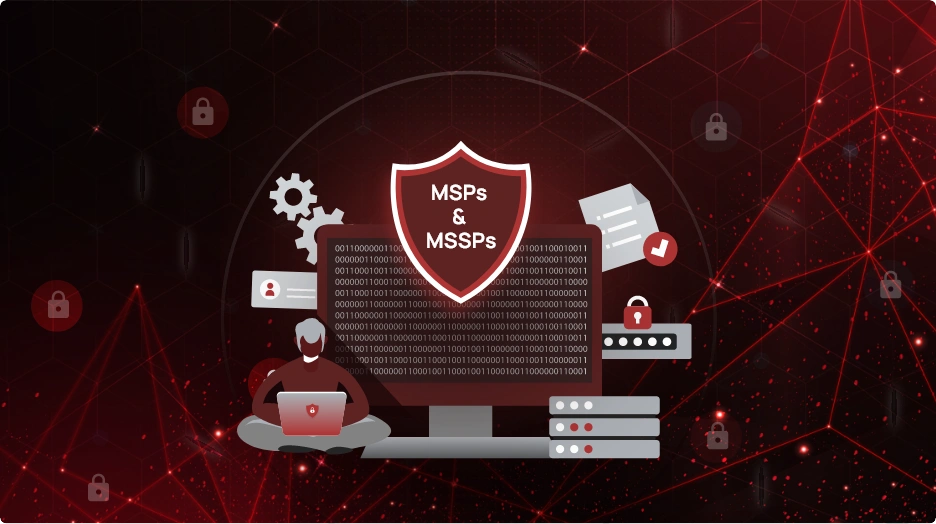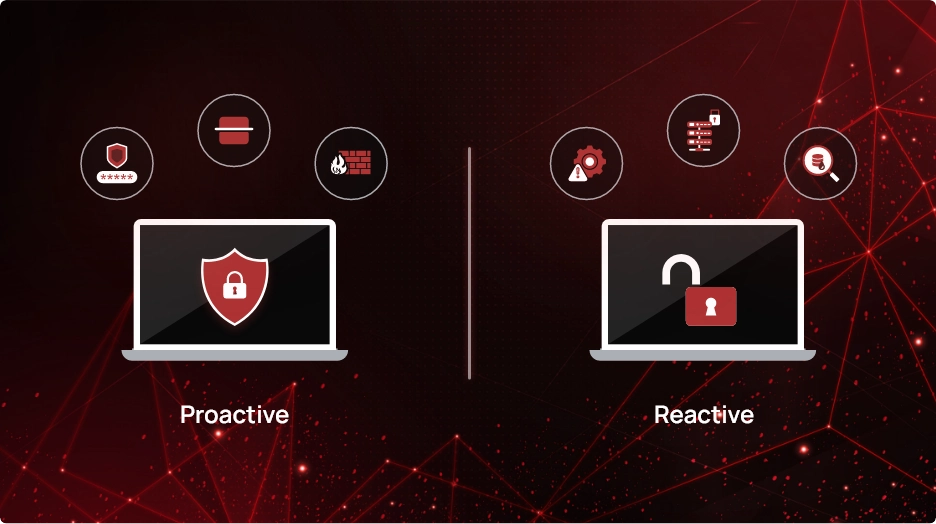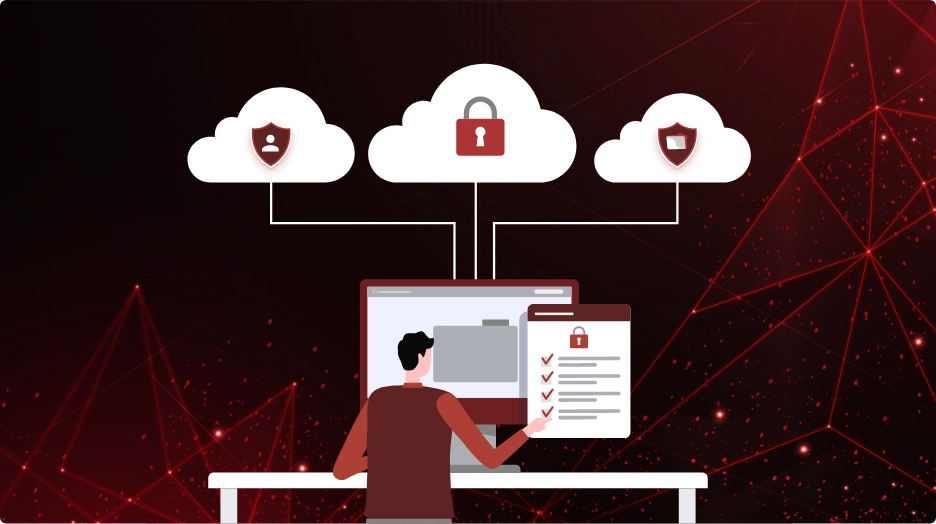Are you keeping your customers safe from data breaches?

Today, data security is a primary concern for Managed Service Providers (MSPs) and Managed Security Service Providers (MSSPs). Tasked with protecting sensitive information, MSPs and MSSPs play a pivotal role in safeguarding their clients from evolving cyber threats. The escalating frequency and sophistication of data breaches highlight the critical need for robust security measures. With each breach, businesses face not only financial losses but also reputational damage that can impact trust and credibility.
In recent years, the world has witnessed a surge in cyber attacks targeting organizations of all sizes and industries. From sophisticated ransomware attacks to stealthy phishing schemes, the tactics employed by cybercriminals continue to evolve, posing significant challenges to data security professionals.
Understanding the subject of data breaches
Data breaches represent a pervasive threat to businesses worldwide, with their nature continually evolving to exploit vulnerabilities in digital infrastructure. Cyber attackers employ a variety of tactics to infiltrate networks, compromise sensitive information, and disrupt operations.
Common entry points for cyber attackers include unpatched software, weak passwords, and human error, highlighting the diverse array of vulnerabilities that organizations must address. From phishing emails misleading unsuspecting employees to malware-laden downloads, cybercriminals capitalize on human fallibility to gain unauthorized access to critical systems and data repositories.
The financial toll of data breaches encompasses not only direct costs associated with incident response and remediation but also intangible expenses such as lost productivity and regulatory fines. Moreover, the reputational fallout from a breach can tarnish an organization’s brand image irreparably, making it challenging to regain stakeholder trust. For MSPs and MSSPs entrusted with safeguarding client data, the fallout from a breach can be particularly severe, leading to diminished client confidence and potential legal repercussions.
Challenges faced by MSPs and MSSPs
Safeguarding client data presents a variety of challenges for MSPs and MSSPs, necessitating a multifaceted approach to address evolving threats effectively.
Complexity of managing diverse client environments
- MSPs and MSSPs cater to a diverse clientele spanning various industries and organizational sizes, each with its unique IT infrastructure and security requirements.
- Managing disparate environments entails working with a complex maze of technologies, protocols, and compliance standards, complicating the implementation of standardized security measures.
Limitations of traditional security approaches
- Traditional security approaches, such as perimeter-based defenses and signature-based detection systems, are ill-equipped to combat the dynamic nature of modern cyber threats.
- Attack vectors have expanded beyond traditional endpoints to encompass cloud environments, mobile devices, and IoT devices, rendering legacy security measures inadequate.
Resource constraints and talent shortages
- MSPs and MSSPs often struggle with resource constraints and talent shortages, hindering their ability to deploy and maintain robust security infrastructure.
- Recruiting and retaining skilled cybersecurity professionals pose significant challenges amidst a competitive landscape characterized by a scarcity of qualified personnel.
Regulatory compliance and data privacy
- Compliance with stringent regulatory requirements and data privacy laws adds another layer of complexity for MSPs and MSSPs.
- Ensuring adherence to industry-specific mandates such as GDPR, HIPAA, and PCI-DSS necessitates meticulous attention to detail and ongoing compliance audits.
Challenges associated with dynamic regulatory environments
- Dynamic regulatory landscapes pose challenges for organizations, requiring continuous monitoring and adaptation to evolving compliance requirements.
- Keeping ahead of regulatory changes and implementing necessary adjustments is essential to ensure ongoing compliance.
To tackle these challenges, MSPs and MSSPs must embrace innovation, collaborate with industry partners, and invest in cutting-edge technologies to fortify their defenses and uphold their commitment to safeguarding client data.
The role of SaaS and cloud security posture management solutions
Organizations today are increasingly leveraging Software-as-a-Service (SaaS) and cloud-based infrastructure to drive innovation and scalability. However, the shift to cloud computing introduces new complexities and security challenges, necessitating robust solutions to mitigate risks effectively.
SaaS Security Posture Management (SSPM) and Cloud Security Posture Management (CSPM) solutions are specialized tools designed to monitor and manage the security posture of cloud environments. SSPM focuses on securing SaaS applications, while CSPM encompasses broader cloud infrastructure security, including Infrastructure-as-a-Service (IaaS) and Platform-as-a-Service (PaaS) environments.
Advantages of leveraging SSPM and CSPM solutions:
- Proactive risk management: SSPM and CSPM solutions provide real-time visibility into cloud environments, enabling organizations to identify and remediate security vulnerabilities proactively.
- Automated compliance monitoring: These solutions facilitate compliance enforcement by automating audits, ensuring adherence to regulatory standards and internal policies.
- Continuous monitoring: Continuous monitoring is paramount in cloud environments, where assets and configurations can change rapidly. SSPM and CSPM solutions enable organizations to monitor configurations, assess compliance posture, and remediate misconfigurations promptly.
Implementing effective data protection strategies
Effective data protection strategies are crucial for service providers to safeguard client data from evolving cyber threats. Here are key best practices to enhance data protection:
Comprehensive risk assessment and prioritization:
- Conduct thorough risk assessments to identify vulnerabilities and potential security gaps across client environments.
- Prioritize risks based on their severity and potential impact on business operations and data integrity.
Robust access controls and encryption protocols:
- Implement stringent access controls to restrict unauthorized access to sensitive data and critical systems.
- Employ encryption protocols to secure data both in transit and at rest, mitigating the risk of data interception and unauthorized disclosure.
Ensuring compliance and regulatory adherence:
- Adherence to industry-specific regulations such as GDPR, HIPAA, and PCI-DSS is essential to protect sensitive data and maintain regulatory compliance.
- Non-compliance can result in hefty fines, legal consequences, and reputational damage, highlighting the criticality of regulatory adherence.
Role of SaaS and CSPM solutions in facilitating regulatory adherence
SSPM and CSPM solutions provide automated compliance monitoring and auditing capabilities, streamlining regulatory adherence processes. These solutions offer real-time visibility into compliance posture, enabling organizations to address compliance gaps promptly and mitigate regulatory risks effectively.
Leveraging CheckRed for enhanced data security
In summary, safeguarding against data breaches is a must for MSPs and MSSPs. CheckRed offers innovative SaaS and Cloud Security Posture Management solutions to address these challenges effectively. By providing comprehensive visibility, automated compliance monitoring, and proactive risk detection capabilities, CheckRed empowers MSPs and MSSPs to fortify their defenses and uphold their commitment to safeguarding client data.


